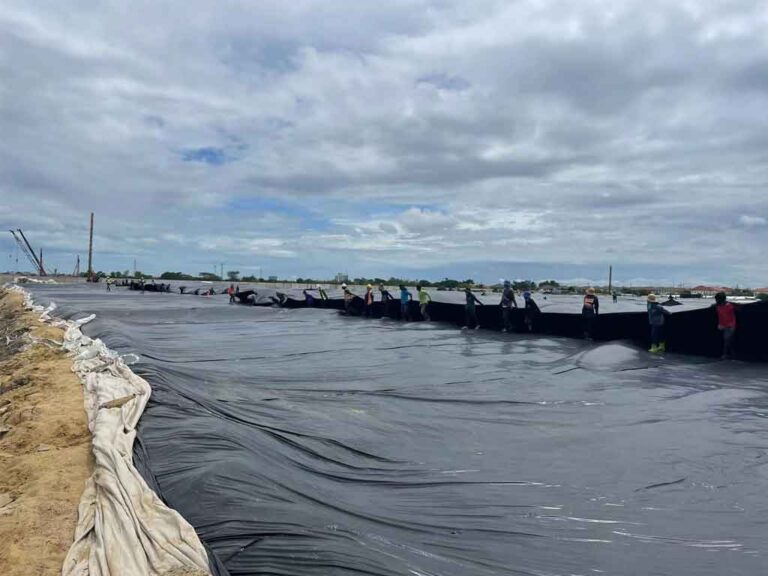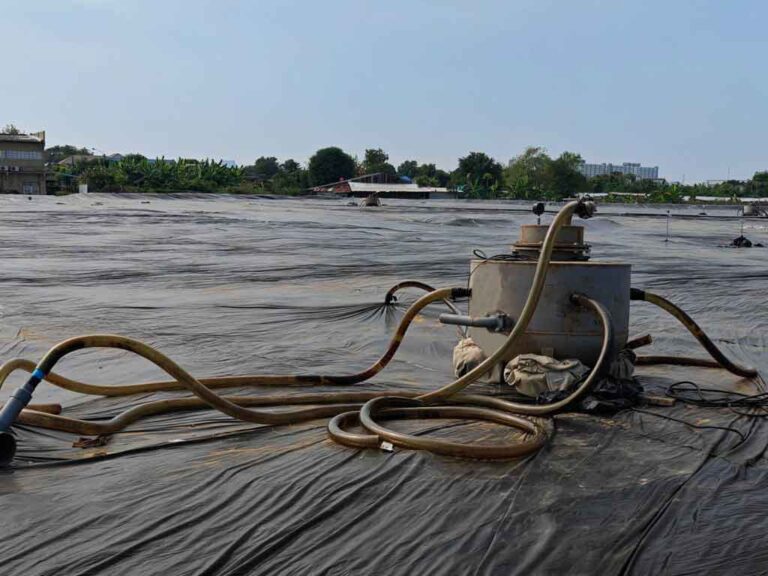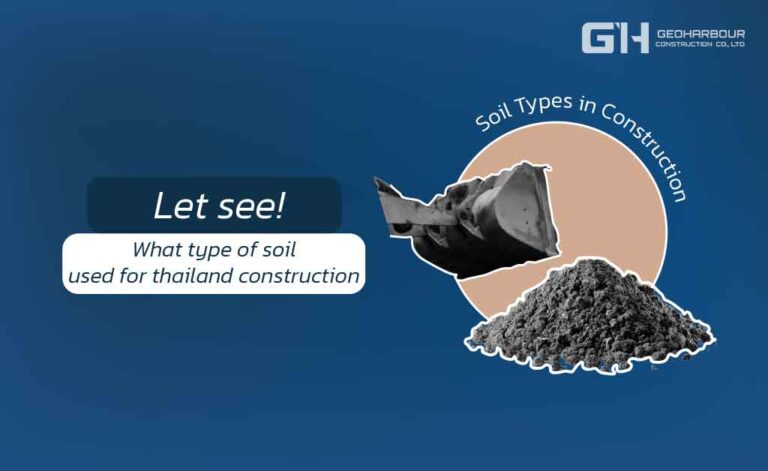
Soil settlement is one of the most critical challenges in construction, especially in Bangkok, where thick layers of soft clay (Bangkok Soft Clay) have very low bearing capacity. Without proper soil improvement before construction, buildings, roads, and infrastructure may experience long-term settlement, leading to safety concerns and costly repairs in the future.
One widely recognized technique to address this issue is the Vacuum Consolidation Method (VCM). This method accelerates soil consolidation by applying vacuum pressure to induce negative pore water pressure, effectively controlling settlement within a shorter timeframe.
So, what makes VCM an effective solution for projects in Bangkok? What are its key benefits and limitations? And which types of projects are best suited for this method? This article provides a comprehensive overview.
Table of Contents
What is the Vacuum Consolidation Method (VCM)?
The Vacuum Consolidation Method (VCM) is a ground improvement technique that accelerates soil settlement before construction begins. It works by creating negative pressure (vacuum) in the soil, reducing the voids between soil particles through water expulsion. This generates effective stress within the soil, which causes the soil structure to densify and strengthen.
Key principles of VCM:
- Application of vacuum pressure generates negative pore water pressure, increasing effective stress in the soil.
- Soil particles are compressed more tightly, leading to continuous settlement until a stable condition is reached.
- The process ensures uniform and controlled settlement, significantly reducing post-construction settlement.
- Ultimately, soil bearing capacity is enhanced to safely support the planned structures.
The theoretical basis of VCM is consistent with consolidation theory: while total stress remains constant, effective stress increases as pore water pressure decreases. Calculations are similar to those used in soil preloading methods.
What Types of Soil Suitable for VCM?
VCM is particularly effective in low-permeability soils with high fine-particle content, such as:
- Soft Clay
- Fine-grained soils where more than 50% passes a #200 sieve (particle size < 0.075 mm).
These soil types, which are prone to settlement and have low natural drainage capacity, are highly compatible with VCM.
Benefits and Limitations of VCM
Benefits
- Reduced improvement time: Settlement can be accelerated and stabilized within 6 months – 1 year, compared to several years with conventional surcharge preloading.
- Effective settlement control: Continuous monitoring of pressure levels, drainage, and instrumentation ensures reliable prediction and management of soil settlement.
- Ideal for large-scale projects: Suitable for airports, ports, highways, industrial zones, and high-rise developments.
- Efficient in areas lacking fill material: Provides an alternative where importing surcharge soil is costly or impractical.
Limitations
- Only effective in saturated low-permeability soils: Performance decreases in sandy or gravelly soils where water drains too quickly to maintain vacuum pressure.
- Requires high technical expertise: Installation of PVDs, geomembranes, and sealing systems must be precise. Any leakage significantly reduces efficiency.
- Buffer zones are necessary: Vacuum pressure may affect adjacent areas if not properly calculated.
- Continuous monitoring is essential: Vacuum pressure and drainage conditions must be observed regularly throughout the project to ensure performance.
What Types of Projects are Suitable for VCM?
VCM can be applied in a wide variety of projects, including:
- High-rise building foundations
- Roads and highways
- Airports
- Ports and reclamation projects
- Residential and commercial developments
Its main advantage lies in controlling soil settlement while shortening construction timelines.
Conclusion
The Vacuum Consolidation Method (VCM) is a proven soil improvement technique suitable for soft clay and other fine-grained soils. It reduces construction time, controls settlement effectively, and increases soil stability, ensuring long-term performance of infrastructure and building projects.
However, VCM is not a one-size-fits-all solution. A detailed geotechnical investigation and design analysis are essential to determine suitability for each project’s soil conditions and objectives. When properly applied, VCM provides reliable and cost-effective ground improvement results.
Further Reading
- ศูนย์วิจัยและพัฒนาวิศวกรรมปฐพีและฐานราก ภาควิชาวิศวกรรมโยธา คณะวิศวกรรมศาสตร์ มหาวิทยาลัยเกษตรศาสตร์ (2561). การแก้ปัญหาการทรุดตัวของงานถนน งานถมที่ และถมบ่อดิน ในพื้นที่ดินเหนียวอ่อนกรุงเทพฯ ด้วยการปรับปรุงคุณภาพดิน และเทคนิค VCM
- Indraratna, B., Sathananthan, I., Rujikiatkamjorn, C., & Balasubramaniam, A. S. (2005). “Vacuum Consolidation Technology: Principles and Field Applications.” Geotechnical Engineering, 36(1), 5-15.
- Sujatha, E.R., & Robinson, R.G. (2015). “Application of Vacuum Consolidation Method for Soft Clay Improvement.” International Journal of Engineering and Technology, 7(3), 851-857.
- กรมโยธาธิการและผังเมือง. (2562). คู่มือแนวทางการปรับปรุงคุณภาพดินสำหรับงานก่อสร้าง.
Follow us on other channels
Facebook: Facebook Profile
Linkedin: Linkedin Profile











